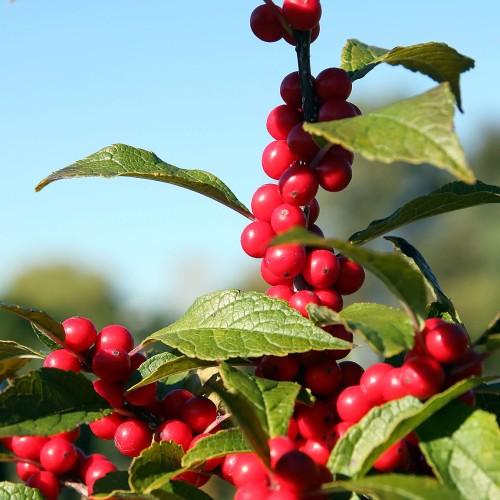
winterberry
Ilex verticillata 'Maryland Beauty'
Cycle:
Perennial
Watering:
Frequent
Hardiness Zone:
3 - 9
Flowers:
Flowers In Spring
Sun:
Full sun,part shade
Fruits:
Fruits Ready In Fall
Edible:
Yes
Leaf:
Yes
Growth Rate:
Low
Maintenance:
Low
Drought Tolerant:
Yes
Salt Tolerant:
Yes
Care Level:
Moderate
watering
Winterberry (Ilex verticillata 'Maryland Beauty') should be watered deeply and thoroughly on a weekly basis, as the deep roots of this plant species require a steady supply moisture to thrive. During the growing season, water Winterberry every 7-10 days, making sure to water at the base of the plant and to saturate the soil to a depth of 8-10 inches. In drought conditions, be sure to increase the frequency of watering to provide the plant with sufficient moisture. During the dormant season, reduce watering to every other week, as over-watering will leave the plant susceptible to root rot.
sunlight
Winterberry (Ilex verticillata 'Maryland Beauty') requires at least 6 hours of direct sunlight each day in order to thrive. Hours of sunlight may vary depending upon geographic location, but plants typically require full sun or part shade in order to be healthy and grow vigorously. Winterberry should also be protected from extreme temperatures, both hot and cold, and should be kept away from harsh winds. A light to moderate amount of shade is recommended during extreme heat or periods of extended daylight. Winterberry is hardy in zones 3-9.
pruning
Winterberry (Ilex verticillata 'Maryland Beauty') is an excellent plant for adding color and texture to the landscape. Pruning of this plant should be done in late winter or early spring. Pruning should include removing dead or weak branches, as well as removing excess growth to maintain the plant's shape and size. Generally, only about 10-20% of the growth should be removed during pruning. It is important to avoid removing too much growth as this may detract from the overall fullness of the plant. Care should also be taken to avoid over pruning, as this can cause stress to the plant and may stunt growth.
